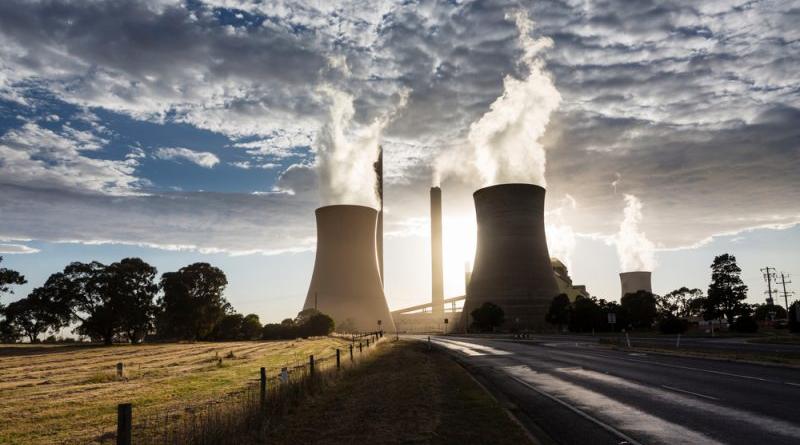Also decarbonising the high-hanging fruits

Electricity is key to decarbonise most sectors of the economy. But, for some of them, such as aviation and maritime transport, electricity alone will not be appropriate. For those, new energy solutions – based on low-carbon electricity, low-carbon hydrogen, carbon dioxide (CO2) and careful use of biomass – must be developed. The Fit for 55 package provides a framework for such solutions but barriers still need to be addressed in order to develop the production chain at the required scale and to use the resources efficiently.
Brice Lalonde is a former French minister for Environment. He is the president of EdEn which is a cross-sectoral think tank gathering companies from the energy, building and mobility sectors and aiming at enabling the energy transition and decarbonisation at the EU level.
—————————–
To achieve its energy transition, the EU will need to use various forms of decarbonised energy and identify the sectors in which each of them can bring the most significant added-value.
Low-carbon electricity will play a major role as it can be used in most sectors such as buildings and road transport. For this reason, it is expected that electricity will cover half of the final energy needs by 2050.
But certain sectors, such as aviation and maritime transport, cannot be as easily electrified. Therefore support must be provided for the development of new low carbon solutions such as hydrogen, advanced biofuels and synthetic fuels (e-fuels).
The most promising of these solutions, which still require significant technological development, depend on low-carbon electricity and the availability of carbon from non-fossil origin, either biogenic carbon extracted from biomass or carbon dioxide captured from industrial emissions or directly from the air. The appropriate supply chains must be set up, or the feedstocks will be missing.
To promote these new energy solutions at the required scale without relying on imports – and thus compromising its energy independence – the EU needs to implement an ambitious industrial strategy up to par with competitors, such as the US Inflation Reduction Act.
Streamlining the use of biomass and prioritising it in the sectors where it brings the most significant added-value
Biomass will be a limiting factor as many sectors are competing for the use of available resources. the EU must clearly define the sectors and processes in which the use of biomass will bring the most significant added-value. No need to increase the use of biofuels for cars that are going to be electrified. Hard to abate sectors, such as aviation, maritime transport, certain industry sectors should be given the priority in the use of biomass feedstocks. Nevertheless there will not be enough biomass resources, therefore the EU must kickstart the production of e-biofuels, which allow to optimally combine biomass feedstocks with low-carbon electricity resources. and, even better, of e-fuels, which are produced by combining decarbonised hydrogen and non-fossil carbon with a large amount of low carbon electricity.
Placing renewable and low-carbon energy on an equal footing
The European production of low-carbon hydrogen is currently in its very early stages. With the adoption of the ReFuelEU and FuelEU Maritime regulations and their new objectives for increased hydrogen use in the aviation and maritime sectors, the EU needs to kick off its domestic production of low-carbon hydrogen.
Yet, for now, the EU seems to focus only on renewable hydrogen and to forget about the low-carbon hydrogen produced by nuclear electricity. The Union should remain technologically neutral and make use of all the decarbonised forms of hydrogen that can be produced on its territory. The same logic goes for the production of electricity which will be the main enabler of the European decarbonisation strategy. Gross electricity needs may double by 2050 due to a number of sectors switching from fossil fuels to electricity and to the progress of new energy carriers that require electricity for their production such as hydrogen and e-fuels. In order to cover these increasing needs, the EU needs to simultaneously tap the potential of both renewable energy and of low-carbon electricity from nuclear sources.
Recycling carbon by developing CCUS and DAC
CO2 emissions are the main cause of climate change, therefore the EU must include CO2 capture and storage or utilisation technologies in its emission reduction strategy. Their inclusion in the list of net-ZIA net-zero technologies is a good start.
Carbon emissions in the atmosphere must be avoided but the carbon component will remain key in many industrial processes, which is why its availability is as crucial as that of hydrogen. The EU needs to forge a circular approach to carbon by advancing CO2 capture, storage and utilisation techniques.
The first step should be to deploy carbon capture technologies in industrial sites that cannot be decarbonised easily, such as cement plants, steel industry and some chemical plants. This industrial CO2 can then either be stored in deep geologic formations or used for the production of e-fuels and other carbon-based products. Yet, according to the ReFuelEU draft regulation, the use of industrial carbon for the production of SAF will only be allowed until 2041.
This means that more advanced carbon capture technologies will have to emerge. Direct air capture appears to be a possible solution as small pilot plants are currently operated in Iceland and in the United States. These technologies will require very large amounts of low-carbon electricity, which at this stage may not be available in all Member States.
The technology neutrality principle means that all the technologies that can bring CO2 emission reductions should contribute to the energy transition of the EU. The best pathway must be selected for each problem to be solved. Scarce resources and investment potential should not be spread across sectors randomly and result in overlaps in some sectors while others are left with no available solutions.
cover photo: I. Noyan Yilmaz / Shutterstock]




